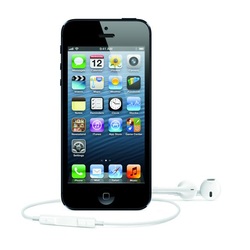 The iPhone 5 uses iOS (previously “iPhone OS”), a mobile operating system (“mobile OS”) developed and distributed by Apple Inc. The user interface, the industrial design field of human-machine interaction--the space where interaction between humans and machine occurs--of iOS is based in the concept of direct manipulation; in computer science, is a human-computer interaction style which involves continuous representation of objects of interest and rapid, reversible, and incremental actions and feedback. It uses multi-touch gestures, or standardized motion used to interact with multitouch devices. Interface control elements consist of sliders, switches, and buttons. Interaction with the OS includes gestures such as “swipe,” “tap,” “pinch,” and “reverse pinch” all of which have specific definitions within the context of the iOS operating system and its multi-touch interface. Internal accelerometers, or devices that measure proper acceleration are used by some applications to respond to shaking the device (one common result of the undo command) or rotating it vertically (one common result is switching from portrait to landscape mode).The iPhone 5 is shipped with iOS 6 (released in September 19, 2012). Many of the iPhone 5’ features that work specifically with the included new iOS 6.0 operating system, will only work in certain territories on release. Apple has said this is a rolling program, which will take longer to implement across more regions. The phone can act as a hotspot, a site that offers Internet access over a wireless local area network through the use of a router connected to a link to an Internet service provider; sharing its internet connection over WiFi, Bluetooth, or USB. It also accesses the Apple App Store, a online/digital application distribution platform for iOS developed and maintained by Apple Inc.--”application software,” also known as an “application” or an “app,” is computer software designed to help the user to perform specific tasks; while “digital distribution” (also called “content delivery,” online distribution,” or “electronic software distribution” (“ESD”), among others) describes the delivery of media content such as audio, video, software and video games, without the use of physical media usually over online delivery mediums, such as the Internet. The service allows users to browse and download mobile applications (“mobile apps”), or software applications designed run on smartphones, tablet computers and other mobile devices, from the iTunes Store, originally the “iTunes Music Store,” a software-based online digital media store operated by Apple Inc., that were developed by Xcode, an Integrated Development Environment (IDE) containing a suite of software development tools developed by Apple for developing software for OS X and iOS; and the iOS SDK (“Software Development Kit”) (formerly “iPhone SDK”), a software development kit developed by Apple Inc, released in February 2008 to develop native applications for iOS. See: Internet By Satellite Broadband
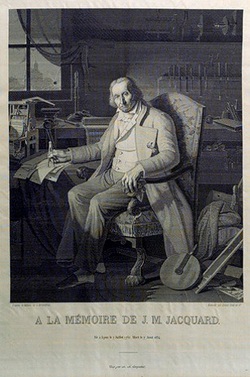 In 1801, Joseph Marie Jacquard, a French weaver and merchant, made an improvement to the textile loom, a device used to weave cloth. This is by introducing a series of punched paper cards (“IBM/Hollerith card”), a piece of stiff paper that contains digital information represented by the presence or absence of holes in predefined positions, as a template which allowed his loom to weave intricate patterns automatically. The resulting Jacquard loom was an important step in the development of computers because the use of punched cards to define woven patterns can be viewed as an early, albeit limited, form of programmability. It was the fusion of automatic calculation with programmability that produced the first recognizable importers. In 1837, Charles Babbage, FRS, an English mathematician, philosopher, inventor and mechanical engineer, originated and designed the concept of a programmable mechanical computer, built from mechanical components such as levers and gears, rather than electronic components--his analytical engine. Limited faces and Babbage’s inability to resist tinkering with the design meant that the device was never completed--nevertheless his son, Henry Babbage, completed a simplified version of the analytical engine’s computing unit (the “mill”) in 1888. He gave a successful demonstration of its use in computing tables in 1906. In 1910, this machine was given to the Science museum, one of the three major museums on Exhibition Road, South Kensington, London, in the Royal Borough of Kensington and Chelsea.In the late 1880s, Herman Hollerith, an American statistician who developed a mechanical tabulator based in punched cards to rapidly tabulate statistics from millions of pieces of data, invented the recording of data on a machine-readable medium. Earlier uses of machine-readable media had been for control, not data. “After some initial trials with paper tape, he settled on punched cards...”; punched/perforated paper tape is a form of data storage, consisting of a long strip in which holes are punched to store data. To process these punched cards he invented the tabulator, or “tabulating machine,” an electrical device designed to assist in summarizing information and, alter, accounting; and the keypunch machines, devices used for the purpose of entering data onto punch cards by precisely punching holes in the cards at specific locations as determined by the keys struck by the operator. These three inventions were the foundation of the modern information processing industry. Large-scale automated data processing of punched cards was performed for the Eleventh United States Census, taken June 2, 1890, by Hollerith's company, which later became the core of IBM, or the “International Business Machines Corporation,” an American multinational technology and consulting corporation, with headquarters in Armonk, New York, United States. By the end of 19th century, a number of ideas and technologies, that would later prove useful in the realization of practical computers, had begun to appear: Boolean algebra (or “Boolean logic”), a logical calculus of truth values, developed by George Boole in the 1840s; the vacuum tube (“electron tube” (North America), “thermionic valve,” or “valve”) which in electronics is a device controlling electric current through a vacuum in a sealed container; punched cards and tape; and the teleprinter (“teletypewriter,” “Teletype” or “TTY”), an electro mechanical typewriter that can be used to send and received typed messages from point to point and point to multipoint over various types of communications channels. See: Internet On Satellite Broadband
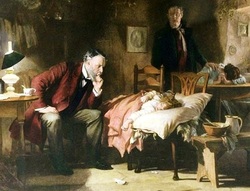 In clinical practice, doctors personally assess patients in order to diagnose, which refers both to the process of attempting to determine or identify a possible disease or disorder (and diagnoses in this sense can also be termed (medical) “diagnostic procedure”), and to the opinion reached by this process (also being termed (medical) “diagnostic opinion”), treat, and prevent disease using clinical judgment.The doctor-patient relationship, central to the practice of healthcare and is essential for the delivery of high-quality health care in the diagnosis and treatment of disease, typically begins an interaction with an examination of the patient’s medical history, or “anamnesis” of a patient, the information gained by a physician by asking specific questions, either of the patient or of other people who know the person and can give suitable information (in this case, it is sometimes called “heteroanamnesis”), with the aim of obtaining information useful in formulating a diagnosis and providing medical care to the patient; and medical/health record/chart, the systematic documentation of a single patient’s medical history and care across time within one particular health care provider’s jurisdiction.
The second step is a medical interview and a physical/medical/clinical examination (more popularly known as a “check-up” or “medical”), the process by which a doctor investigates the body of a patient for signs of disease. Basic diagnostic medical devices, or instruments, apparatuses, implants, in vitro reagents, or similar or related articles that is used to diagnose, prevent, or treat disease or other conditions, and does not achieve its purpose through chemical action within or on the body (which would make it a medicine), are typically used; e.g. stethoscope, an acoustic medical device for auscultation, or listening to the internal sounds of an animal or human body, and tongue depressor, a device used in medical practice to depress the tongue to allow for examination of the mouth and throat.
After examination for (medical) signs--an objective indication of some medical fact or characteristic that may be detected by a physician during a physical examination or by a clinical scientist by means of an in vitro examination of a patient--and interviewing for symptoms, a departure from normal function or feeling is noticed by a patient, indicating the presence of disease or abnormality, the doctor may order medical tests, a kind of medical procedure to detect, diagnose, or monitor diseases, disease processes, susceptibility, and determine a course of treatment (e.g. blood tests, a laboratory analysis performed on a blood sample that is usually extracted from a vein in the arm using a needle, or via finger prick); take a biopsy, a medical test commonly performed by a surgeon or an interventional radiologist involving sampling of cells or tissues for examination; or prescribe pharmaceutical drugs/medicine/medication, loosely defined as any chemical substance intended for use in the medical diagnosis, cure, treatment, or prevention or disease, or other therapies.
Differential diagnosis methods (sometimes abbreviated “DDx,” “ddx,” “DD,” “D/Dx,” “or “ΔΔ”), a systematic diagnostic method used to identify the presence of an entity where multiple alternatives are possible (and the process may be termed “differential diagnostic procedure”), and may also refer to any of the included candidate alternatives (which may also be termed “candidate condition”), help out to rule out conditions based on the information provided. During the encounter, properly informing the patient of all relevant facts is an important part of the relationship and the development of trust. The medical encounter is then documented in the medical record, which is a legal document in many jurisdictions. Followups may be shorter but follow the same general procedure.
The components of the medical interview and encounter are:
- Chief complaint (cc): the reason for the current medical visit. these are the ‘symptoms.’ They are in the patient’s own words and are recorded along with the duration of each one. Also called ‘presenting complaint.’
- HPI or History of present illness/complaint (sometimes referred to as “ill-health” or “ailment”), a state of poor health: the chronological order of events of symptoms and further clarification of each symptom.
- Current activity: occupation, hobbies, what the patient actually does.
- Medications (Rx), also referred to as “pharmaceutical drug” or “medicine,” loosely defined as any chemical substance intended for use in the medical diagnosis, cure, treatment, or prevention of disease: what drugs the patient takes including prescribed, over-the-counter (OTC, medicines that may be sold directly to a consumer without a prescription from a healthcare professional, as compared to prescription drugs, which may be sold only to consumers possessing a valid prescription; and home remedies (a treatment to cure a disease or ailment that employs certain spices, vegetables, or other common items), as well as alternative and herbal medicines/herbal remedies (“herbalism,” the study and use of medicinal properties of plants). Allergies, or the hypersensitivity disorder of the immune system, are also recorded.
- Past medical history (PMH/PMHx): concurrent medical problems; past hospitalizations and operations; injuries; past infectious diseases, also known as “transmissible diseases” or “communicable diseases,” comprising clinically evident illness (i.e., characteristic medical signs and/or symptoms of disease) resulting from the infection, presence and growth of pathogenic biological agents in an individual host organism; and/or vaccinations, or the administration of antigenic material (a vaccine) to stimulate an individual's immune system to develop adaptive immunity to a pathogen; history of known allergies.
- Social history (SH): birthplace, residences, marital history, social and economic status, habits (including diet (which in nutrition is the sum of food consumed by a person or other organism), medications, tobacco smoking (the practice of burning tobacco and inhaling the resulting smoke consisting of particle and gaseous phases), alcohol).
- Family history (FH), which in medicine consists of information about disorders from which the direct blood relatives of the patient have suffered: listing of diseases in the family that may impact the patient. A family tree, or pedigree chart, a chart representing family relationships in a conventional tree structure, is sometimes used.
- Review of systems (ROS) or “systems inquiry”: a set of additional questions to ask, which may be missed on HPI; a general enquiry (have you noticed any weight loss, change on sleep quality, fevers, lumps and bumps? etc.), followed by questions in the body's main organ systems--the human heart, an organ that provides a continuous blood circulation through cardiac cycle and is one of the most vital organs in the human body; the human lungs, the organs of respiration in humans; the human gastrointestinal/digestive tract, the stomach and intestine, sometimes including all the structures from the mouth to the anus; the urinary tract/renal system, the organ system that produces, stores, and eliminates urine; etc.
The physical/medical/clinical examination (more popularly known as a “check-up” or “medical”) is the process by which a doctor investigates the body of a patient for signs of disease: ‘symptoms’ are what the patient volunteers, while ‘signs’ are what the healthcare provider detects by examination.
The healthcare provider uses the senses of sight, hearing, touch, and sometimes smell; e.g., in infection, uremia/uraemia (a term used to loosely describe the illness accompanying kidney failure (also called renal failure), in particular the nitrogenous waste products associated with the failure of this organ), diabetic ketoacidosis (a potentially life-threatening complication in patients with diabetes mellitus). Taste has been made redundant by the availability of modern lab tests.
Four actions are taught as the basis of physical examination: inspection, which in medicine, is the through and unhurried visualization of the client; palpation (feel), used as part of a physical examination in which an object is felt (usually with hands of a healthcare practitioner) to determine its size, shape, firmness, or location; percussion (tap to determine resonance characteristics), a method to determine the underlying structure, and is used in clinical examinations to assess the condition of the thorax or abdomen; and auscultation (listen), or the term for listening to the internal sounds of the body, usually using a stethoscope. This order may be modified depending on the main focus of the examination (e.g., a joint may be examined by simply “look, feel, move.” Having this set order is an educational tool that encourages practitioners to be systematic in their approach and refrain from using tools such as the stethoscope--an acoustic medical device for auscultation, or listening to the internal sounds of an animal or human body--before they have fully evaluated the other modalities).
The clinical examination involves study of:
- Vital signs including height, weight, body temperature, blood pressure (BP; sometimes referred to as “arterial blood pressure,” the pressure exerted by circulating blood upon the walls of blood vessels, and is one of the principal vital signs), pulse (in medicine, it represents the tactile arterial palpation of the heartbeat by trained fingertips), respiration rate, hemoglobin oxygen saturation/dissolved oxygen (DO; a relative measure of the amount of oxygen that is dissolved or carried in a given medium)
- General appearance of the patient and specific indicators of disease (nutritional status, presence of jaundice, pallor or nail clubbing, which in medicine, is a deformity of the fingers and fingernails associated with a number of diseases, mostly of the heart and lungs)
- Human skin, the outer covering of the body
- Head, eye, ear (the organ that detects sound), nose, and throat--HEENT
- Cardiovascular, or the circulatory system, an organ system that passes nutrients (such as amino acids, electrolytes and lymph), gases, hormones, blood cells, etc. to and from cells in the body to help fight diseases, stabilize body temperature and pH, and to maintain homeostasis: heart, a hollow muscle that pumps blood throughout the blood vessels by repeated, rhythmic contractions; and blood vessels, the part of the circulatory system that transports blood throughout the body
- Respiratory, or the respiratory/ventilatory system, the biological system of an organism that introduces respiratory gases to the interior and performs gas exchange: large airways and lungs, the essential respiration organ in many air-breathing animals, including most tetrapods, a few fish and a few snails
- Abdomen, in vertebrates such as mammals, constitutes the part of the body between the thorax (chest) and pelvis; and rectum, the final straight portion of the large intestine in some mammals, and the gut in others
- Genitalia (and pregnancy if the patient is or could be pregnant)
- Musculoskeletal system (including spine and extremities; also known as the “locomotor system”), an organ system that gives animals (and humans) the ability to move using the muscular and skeletal systems
- Neurological, medical specialty dealing with disorders of the nervous system: consciousness; awareness; brain; vision; cranial nerves, or nerves that emerge directly from the brain, in contrast to spinal nerves, which emerge from segments of the spinal cord; spinal cord; and the “peripheral nervous system” (“PNS,” or occasionally “PeNS”), consisting of the nerves and ganglia outside of the brain and spinal cord
- Psychiatry, the medical specialty devoted to the study and treatment of mental disorders: orientation; mental status examination (USA), or “mental state examination” (rest of the world), abbreviated “MSE,” an important part of the clinical assessment process in psychiatric practice; evidence perception or thought
It is to likely focus on areas of interest highlighted in the medical history and may not include everything listed above.
A medical/clinical laboratory, a laboratory where tests are done on clinical specimens in order to get information about the health of a patient ads pertaining to the diagnosis, treatment, and prevention of disease; and imaging studies (“medical imaging”), the technique and process used to create images of the human body (or parts and function thereof) for clinical purposes (medical procedures seeking to reveal, diagnose, or examine disease) or medical science (including the study of normal anatomy and physiology), results may be obtained, if necessary.
The medical decision-making (MDM) process involves analysis and synthesis of all the above data to come up with a list of possible diagnoses (the differential diagnoses; sometimes abbreviated “DDx,” “ddx,” “DD,”” D/Dx,” or ΔΔ), a systematic diagnostic method used to identify the presence of an entity where multiple alternatives are possible (and the process may be termed “differential diagnostic procedure”), and may also refer to any of the included candidate alternatives (which may also be termed “candidate condition”); along with an idea of what needs to be done to obtain a definitive diagnosis that would explain their patient’s problem.
The treatment plan may include ordering additional laboratory tests and studies, starting therapy, referral to a specialist, or watchful observation; a laboratory is a facility that provides controlled conditions in which scientific research, experiments, and measurements may be performed. Follow-up may be advised.
This process is used by primary care providers as well as specialists. It may take only a few minutes if the problem is simple and straightforward. On the other hand, it may take weeks in a patient who has been hospitalized with bizarre symptoms or multi-system problems, with involvement by several specialists.
On subsequent visits, the process may be repeated in an abbreviated manner to obtain any new history, symptoms, physical findings, and lab or imaging results, or specialist consultations.See: NewSat's Internet From Satellite
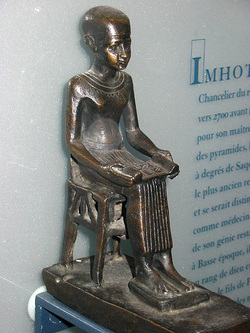 “We find [medial semiotics] in a whole constellation of disciplines.... There was a real common ground among these [Babylonian] forms of knowledge... an approach involving analyses of particular cases, constructed only through traces, symptoms, hints.... In short, we can speak about a symptomatic or dinatory (or conjectural), paradigm which could be oriented toward past present or future, depending on the form of knowledge called upon. Toward future... that was the medical science of symptoms, with its double character, diagnostic, explaining past and present, and prognostic, suggesting likely future....”
- Carlo GinzburgEarly records on medicine have been discovered from ancient Egyptian medicine (some of the oldest documented); Babylonian medicine; Ayurvedic medicine, a Hindu system of traditional medicine native to the Indian continent, a southerly region of Asia, mostly situated on the Indian Plate and project southward into the Indian Ocean, and a form of alternative medicine; classical Chinese medicine, a broad range of medicine practices sharing common theoretical concepts which have been developed in China and are based on a tradition of more than 2,000 years, including various forms of herbal medicine, acupuncture massage (Tui na), exercise (qigong), and dietary therapy, predecessor to the modern traditional Chinese medicine (“TCM”); and ancient Greek medicine, which revolves around the theory of humours, and the medicine in ancient Rome, combining various techniques using different tools and rituals.
The Egyptian Imhotep, a polymath who served under the Third Dynasty king Djoser as chancellor top the pharaoh and high priest of the sun god Ra at Heliopolis (3rd millenium BC), is the first physician in history known by name. Earliest records of dedicated hospitals come from Mihintale in Sri Lanka, an island country in the northern Indian Ocean off the southern coast of the Indian subcontinent in South Asia, where evidence of dedicated medicinal treatment facilities for patients are found. The Indian surgeon Sushruta, an ancient Indian sage, who was one of the principal contributors to the ancient art and science of Ayurveda, described numerous surgical operations, including the earliest forms of plastic surgery, a medical specialty concerned with the correction or restoration of form and function. See: Backhauling Product
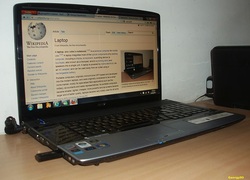 A computer is a general purpose device that can be programmed--a “computer program (also “software,” or just a “program”) is a sequence of instructions written to perform a specified task with a computer--to carry out a finite set of arithmetic or logical operations. Since a sequence of operations can be readily changed, the computer can solve more than one kind of problem.Conventionally, a computer consists of at least one processing element and some form of memory, which in computing, refers to the physical devices used to store programs or sequences of instructions) or data (e.g. program state information) on a temporary or permanent basis for use on a computer or other digital electronic device.The processing element carries out arithmetic and logic operations and a sequencing and control unit that can change the order of operations based on stored information. Peripheral devices allow information to be retrieved from an external source, and the result of operations saved and retrieved. The first electronic digital (data technology that uses discrete (discontinuous) values) computers were developed between 1940 and 1945 in the United Kingdom and United States. Originally, they were the size of a large room, consuming as much power as several modern personal computers (PCs). In this era, mechanical analog computers, a form of computer that uses the continuously changeable aspects of physical phenomena such as electrical, mechanical, or hydraulic quantities to model the problem being solved, were used for military applications.
Modern computers based on integrated circuits, or “monolithic integrated circuit” (also referred to as “IC,” “chip,” or “microchip”) is an electronic circuit manufactured by lithography, or the patterned diffusion of trace elements into the surface of a thin substrate of semiconductor material, are millions to billions of times more capable than the early machines. And also, occupy a fraction of the space.
Simple computers are small enough to fit into: mobile devices (also known as “handheld device,” handheld computer” or simply “handheld”), a small, hand-held computing device, typically having a display screen with touch input and/or a miniature keyboard and weighing less than two pounds (0.91 kg); and mobile computers, human-computer interaction by which a computer is expected to be transported during normal; usage. Both of them can be powered by small batteries, which in electricity, is a device consisting of one or more electrochemical cells that convert stored chemical energy into electrical energy.
Personal computers in their various forms are icons, or the “religious work of art, most commonly a painting, from Early christianity and in certain Eastern Catholic churches, of the Information Age, a period that will be characterized by the ability of individuals to transfer information freely, and to have instant access to information that would have been difficult or impossible to find previously. They are what most people think of as “computers.” However, the embedded computers, or computer systems designed for specific control functions within a larger system, often with real-time computing constraints, found in many devices from: mp3 players (“portable media players (“PMP”), or “digital audio player” (“DAP”), a consumer electronics device that is capable of storing and playing digital media such as audio, images, video, documents, etc. the data is typically stored on a hard drive, microdrive, or flash memory; to fighter aircraft, a military aircraft designed primarily for air-to-air combat against other aircraft, as opposed to bombers and attack aircraft, whose main mission is to attack ground targets; and from toys to industrial robots, defined by ISO, as an “automatically controlled, reprogrammable, multipurpose manipulator programmable in three or more axes,” are the most numerous. See: Satellite Internet/Broadband
The last requirement of the military is for military performance assessment and learning from it. These two functions are performed by military historians who seek to identify failures and success of the armed force and integrate corrections into the military reform with the aim of producing an improved force capable of performing adequately should there be a national defence policy review. Military history is a humanities discipline within the scope of general historical recording of armed conflict in the history of humanity, and its impact on the societies, their cultures, economies and changing intra and international relationships. On the other hand, military theory is the analysis of normative behavior and trends in military affairs and military history, beyond simply describing events in war and military theorists, especially since the influence of Clausewitz in the nineteenth century attempt to encapsulate the complex cultural, political and economic relationships between societies and the conflicts they create.See: NewSat brings Mobile Backhaul Services
Astrium Satellites, one of the three business units of Astrium, a subsidiary of EADS, are providing Ku band and Ka bands payload hardware to NewSat, to date, the largest independent satellite communications provider in Australia, as reported by Space News, the online publication of record for civil space, military space, commercial space, and satellite communications business. They will be under a contract with Jabiru-1 prime contractor Lockheed Martin Space Systems Company, one of the four major business divisions of Lockheed Martin, which will represent a breakthrough for Astrium’s product division. According to Andreas Lindenthal, Head of Astrium Satellites’ Product Department, Astrium was well placed for the Lockheed Martin contract after a development program for Ku band communications receivers and Ka band beacons. The two was funded in part by the European Space Agency (ESA), established in 1975), an intergovernmental organization dedicated to the exploration of space, currently with 19 member states, and the UK Space Agency, a British government agency responsible for United Kingdom’ civil space programme.
See: Satellite Communications Provider
Craig Stephen, a CASBAA connection, shares to four satellite executives about the industry’s extraordinary advancement and innovation. There is a rise to the growth of the new generation of Ka band satellites that delivers more powerful, more focused, and market-specific beams.There is also an improvement on satellite operators when it comes to their service offering, passing the advantages of Ka band to their patrons. They are coming together and working cooperatively to ensure that the industry continues to grow with its orbital arch continuing only 180 slots. See: VSATs
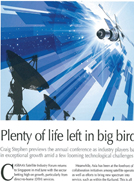
A hot topic at the conference this year is IPTV. Although it is not a new idea, it creates a challenge to be reinvented into a more compelling feature. The day-long discussions, chaired by David Wood, Head of Emerging Media at the European Broadcasting Union, talked about the technical issues surrounding IPTV, and business opportunities such as how IPTV can be differentiated from other TV services. The session also looked at how advertising revenues can be derived from operating an IPTV service. Participants at the IPTV session explored the possibility of combining IPTV’s Video-on-demand features with internal features such as social networking sites and virtual sites. The topic of discussion was also whether this would be successful, as participants also felt that internet-based content often lack the right business models. See: NewSat Teleports
The Strategic Defense Initiative may have been first dubbed “Star Wars” by opponent Dr. Carol Rosin, an award-winning educator, author, leading aerospace executive, space and missile defense consultant, and former spokeswoman for Wernher von Braun, a German-born rocket scientist, aerospace engineer, space architect, and one of the leading figures in the development of rocket technology in Anzzi Germany during World War II and, subsequently, the United States. However, the Missile Defense Agency (MDA) historians, or historians for the section of the United States government’s Department of Defense responsible for developing a layered defense against ballistic missiles, attribute the term to a “Washington Post” article; The Washington Post is the most widely circulated newspaper published in Washington, D.C., and oldest extant in the area, founded in 1877. The article was published on March 24, 1983, the day after the Star Wars speech, which quoted Democratic Senator Ted Kennedy, a United States Senator from Massachusetts and a member of the Democratic Party, describing the proposal as “reckless Star Wars schemes.” Some critics used the term derisively , implying it was an impractical science fiction fantasy. In addition, the American media’s liberal use of the moniker, despite President Ronald Reagan’s request that they use the program’s official name, did much to damage the program’s credibility. In comments to the media on March 7, 1986, Acting Deputy Director of the Strategic Defense Initiative Organization Dr. Gerold Yonas, described the name “Star Wars” as an important tool for Soviet disinformation, or intentional false or inaccurate information that is spread deliberately, and asserted that the nickname gave an entirely wrong impression of SDI. However, supporters have adopted the usage as well on the grounds that yesterday's science fiction is often tomorrow’s engineering.See: VSAT
|






 RSS Feed
RSS Feed